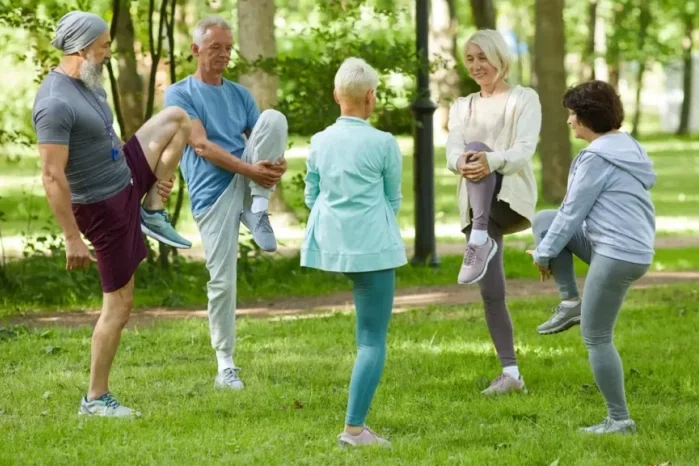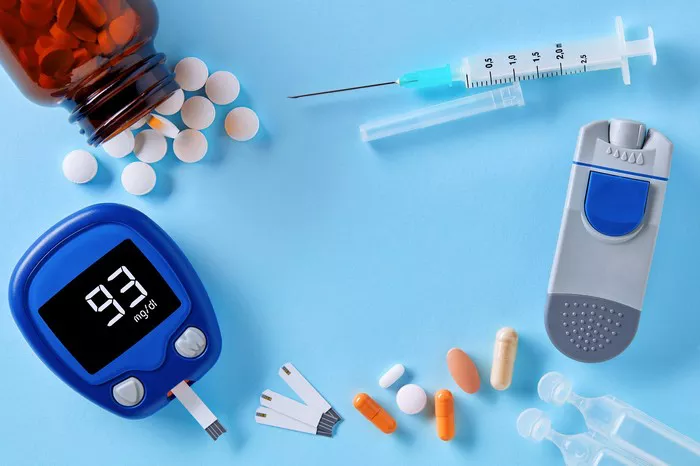Managing type 2 diabetes is a continuous challenge, often necessitating immediate measures to lower blood sugar levels quickly. Sudden spikes can occur due to various factors, such as dietary indiscretions, missed medications, or stress. While long-term control is the cornerstone of diabetes management, knowing how to lower blood sugar rapidly is essential for preventing acute complications like hyperglycemia.
Understanding Hyperglycemia
Hyperglycemia, defined as high blood glucose, typically occurs when blood sugar levels exceed 180 mg/dL. Acute hyperglycemia can lead to serious conditions like diabetic ketoacidosis (DKA) in type 1 diabetes, though rare in type 2, or hyperosmolar hyperglycemic state (HHS) in type 2 diabetes. Symptoms include excessive thirst, frequent urination, fatigue, nausea, and blurred vision. Immediate action is required to prevent these severe outcomes.
Immediate Dietary Interventions
Hydration: Drinking water is one of the simplest and most effective ways to reduce blood sugar. Water helps flush out excess glucose through urine. Aim for at least 8-10 glasses a day, but in times of hyperglycemia, increasing this amount can be beneficial.
Low-Glycemic Foods: Consuming foods with a low glycemic index (GI) can help manage spikes. Examples include whole grains, legumes, and non-starchy vegetables. These foods digest slowly, preventing rapid glucose release.
Fiber-Rich Foods: Dietary fiber, especially soluble fiber, can slow glucose absorption. Foods such as oats, beans, lentils, and certain fruits (like apples and pears) are excellent choices.
Protein and Healthy Fats: Including protein (chicken, fish, tofu) and healthy fats (avocado, nuts, olive oil) in meals can stabilize blood sugar by slowing carbohydrate digestion.
Apple Cider Vinegar: Some studies suggest that consuming apple cider vinegar before meals can improve insulin sensitivity and lower blood sugar levels. A typical recommendation is to mix one to two tablespoons in a large glass of water.
Physical Activity
Exercise is a powerful tool in managing blood glucose levels. It increases insulin sensitivity and promotes glucose uptake by muscles.
Walking: A brisk walk for 15-30 minutes can significantly reduce blood sugar levels. It is particularly effective if done soon after a meal.
Strength Training: Engaging in resistance exercises, such as weight lifting or body-weight exercises (squats, push-ups), helps muscles utilize glucose more efficiently.
High-Intensity Interval Training (HIIT): Short bursts of intense activity followed by rest periods can quickly lower blood sugar levels. Even a 10-minute session can be effective.
Medication Adjustments
Insulin: For those on insulin therapy, a short-acting insulin injection can rapidly reduce high blood sugar. It’s crucial to follow healthcare provider guidelines to avoid hypoglycemia.
Oral Medications: Certain medications, like metformin, sulfonylureas, or meglitinides, may need adjustment. Always consult with a healthcare provider before making any changes.
GLP-1 Receptor Agonists and SGLT2 Inhibitors: These newer classes of medications can also help manage acute hyperglycemia but should be used under medical supervision.
Monitoring Blood Sugar
Continuous glucose monitoring (CGM) or frequent blood glucose testing is essential during episodes of hyperglycemia. It helps track how interventions are working and prevent levels from becoming dangerously high or low.
Stress Management
Stress can cause blood sugar levels to rise due to the release of cortisol. Managing stress through techniques like deep breathing, meditation, yoga, or even short breaks can have a positive impact on blood sugar levels.
Sleep and Rest
Adequate sleep and rest are often overlooked but crucial for blood sugar control. Lack of sleep can affect insulin sensitivity and increase stress hormones, leading to higher blood glucose levels.
Emergency Situations
If blood sugar levels remain high despite interventions, or if symptoms of severe hyperglycemia (like confusion, nausea, or abdominal pain) occur, it’s imperative to seek medical attention immediately.
Lifestyle Modifications for Long-Term Control
While immediate measures are crucial, long-term control of blood sugar involves sustained lifestyle changes. These include a balanced diet, regular physical activity, consistent medication adherence, and routine monitoring.
See also:What Are The Major Types Of Diabetes?
Conclusion
Rapidly lowering blood sugar in type 2 diabetes requires a multifaceted approach, combining dietary adjustments, physical activity, medication management, and stress reduction. Understanding these strategies and implementing them effectively can prevent the acute complications of hyperglycemia and contribute to overall diabetes management.
This comprehensive approach not only addresses immediate needs but also supports long-term health, ensuring a balanced and proactive approach to living with type 2 diabetes. Always consult with a healthcare provider to tailor these strategies to individual needs and ensure safe and effective management.
Related topics:
How Many Carbs Should Type 2 Diabetic Eat Daily?























